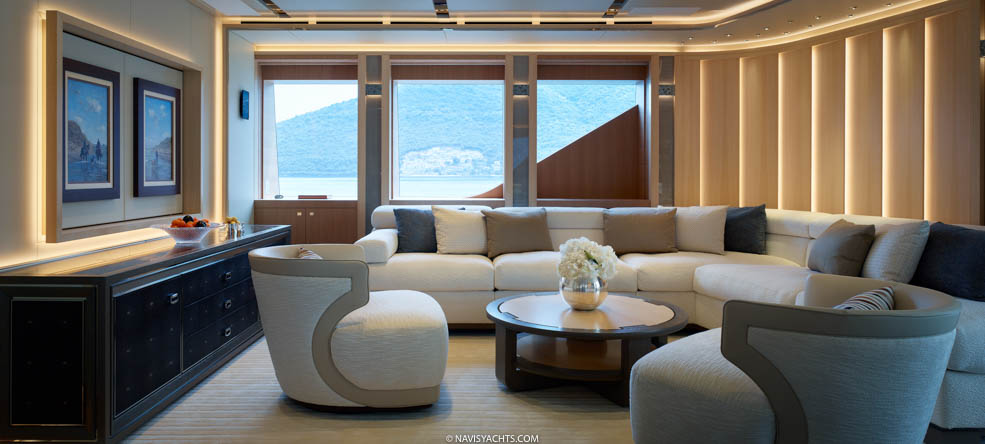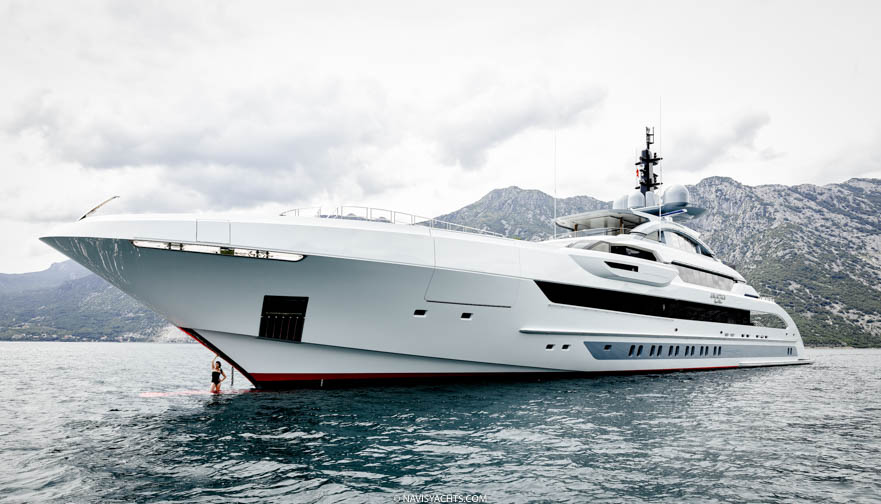Heesen Galactica Super Nova: Luxurious Gifts from a Superior Yacht
Just how does one go about propelling 1200 tons of aluminum superyacht at 30 knots? That is a question in itself, but further confine the parameters to moving it from zero to 30 knots in 75 seconds. If superyachts could speak, Heesen’s Galactica Super Nova would surely be lavishing praise on the team responsible for achieving such a milestone.
Born of a brief requesting planing hull speeds delivered with the comfort and space of a full displacement yacht, Galactica Super Nova demanded the best and the brightest. Collecting expertise from Espen Øino to design the refined exterior lines; from Heesen’s top in-house engineering, electrical, painting, and fit out teams; and from Sinot Exclusive Yacht Design Interiors polishing every space, would no doubt create a noteworthy yacht with much to admire.
Galactica Super Nova’s stunning design has received a great deal of well-deserved attention, but true genius comes into play from something rarely thought about by those enjoying time on board such a beautiful yacht. The performance of the innovative Fast Displacement Hull Form of the yacht, designed by Van Oossanen Naval Architects, is achievement worthy of attention across the industry.
The FDHF and Elimination of the Hump
Extensive research and development is a hallmark at Van Oossanen. Focused on hydrodynamics and performance in naval architecture, the clever minds at the firm developed a way to give superyacht owners exactly what they were looking for in the Fast Displacement Hull Form, FDHF, first produced for Galactica Star, then again for Galactica Super Nova. It has since been requested in dozens of new builds, and has been imitated by many others.
The FDHF is designed to be efficient across all speeds, from the slow speed of a full displacement yacht to planing speeds, with improved seakeeping, wave reduction, and maneuverability. The unique design completely eliminates the discomfort caused by sudden changes in displacement through mid-range speeds. The efficiency of the hull with low resistance reduces fuel consumption while achieving speed with less installed power, lowering costs for both builder and owner.

























